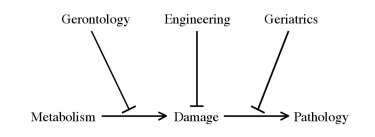More on What People Want and How You Ask
Following up on a recent post on human nature and healthy life extension, I thought I'd point out a couple of examples in the media to reinforce my points.
Eternal life 'not so appealing':
"Contrary to what many in the scientific community have been saying, people are actually much more concerned about the quality of life rather than the length of it," Mr Partridge said."There's been a tendency to just assume that of course everyone will be unconditionally interested in living longer, that they'll want it out of selfishness, but that's really not the case."
These are folk deeply concerned about a supposed future frailty, fraught with irrational fears of overpopulation or worried by basic economic misconceptions. Are we really surprised that people who think it'll be terrible to be alive don't really want to be alive? The doomsayers and Malthusians just don't seem to give up, no matter how wrong they're proven with each passing generation. The world is full of people working hard to build a better future; if they fail, it won't be for lack of forethought or effort. It certainly won't help if they - and we - all age, suffer and die because no-one worked to produce the anti-aging technologies that are within our grasp.
Viewing these sorts of articles continues to reinforce just how important it is to do well in our advocacy. A huge pool of support and resources for meaningful anti-aging research awaits untapped, walled off by widespread misconceptions about healthy life extension and life in a world in which age-related frailty and death no longer exist.
Gray Power: Scientists blast anti-aging claims:
"Anyone who claims that they can stop or reverse the aging process is lying to you - even if they're a doctor. It is not currently possible," says S. Jay Olshansky, a demographer at the University of Illinois at Chicago. "Anti-aging medicine is an industry intended to make money for those who are selling these products."...
No one knows how many Americans buy remedies like "youth" hormone treatments, megavitamin cocktails, herbal elixirs and the like. But experts say it's a multi-billion dollar industry that's exploding. Longevity clinics, some charging $2,000 a visit, are popping up around the country. Anti-aging entrepreneurs also hawk their wares on television infomercials, in direct mail solicitations and on more than a thousand websites.
The "anti-aging" marketplace is huge because people are buying. Sellers are serving a need loudly declared by the wallets of their customers; people want the benefits of youth for longer; people want to put off age-related degeneration. No-one's arm is being twisted here and there's absolutely nothing wrong with the concepts of running a business and making money. Caveat emptor is the rule of the day, and whatever delusion and fraud is going on is ultimately that of the customers upon themselves. In a world that contains Google, the internet and ready access to physicians, there is no excuse for failing to understanding the basics of your purchases, your health, aging and what can be done about it.
This is not to say that it's ethical to push fraudulent products upon the ignorant and self-deluded - but the proper response is education, awareness and shunning the frauds, not reaching for a flawed solution in regulation.
I did want to comment on Olshansky's last words in this article:
Even if major age-related diseases were magically cured by tomorrow morning, we would still age and suffer frailty from the body's inability to repair damage to the building blocks of life.
It seems to me that it's past the point of reasonable doubt for major age-related diseases to be considered as failure modes resulting from a buildup of unrepaired biochemical and cellular damage. The conditions and the damage are not items in different buckets on the checklist; one is caused by the other. The body is a machine; like all machines it accumulates wear and then breaks down in ways that are individually unpredictable, but can be classified and given names. Just like cars, only much more complex.
The diagram on the front page of the SENS website is illustrative of the differences in thinking examined in the above paragraph.
Instead, the engineering (SENS) strategy is not to interfere with metabolism per se, but to repair or obviate the accumulating damage and thereby indefinitely postpone the age at which it reaches pathogenic levels. This is practical because it avoids both of the problems with the other approaches: it sidesteps our ignorance of metabolism (because it does not attempt to interfere with metabolic processes and their production of side-effects) but also it pre-empts the chaos of pathology (because it repairs the precursors of pathology, rather than addressing the pathology head-on).
The above diagram sums up the SENS philosophy. The strange arrows with flat heads are a notation used in the literature of gene expression and gene regulation, and they mean "inhibits". Thus, geriatrics is the attempt to stop damage from causing pathology; traditional gerontology is the attempt to stop metabolism from causing damage; and the SENS (engineering) approach is periodically to eliminate the damage, so keeping its abundance below the level that causes any pathology.
Technorati tags: advocacy, anti-aging, life extension, SENS
